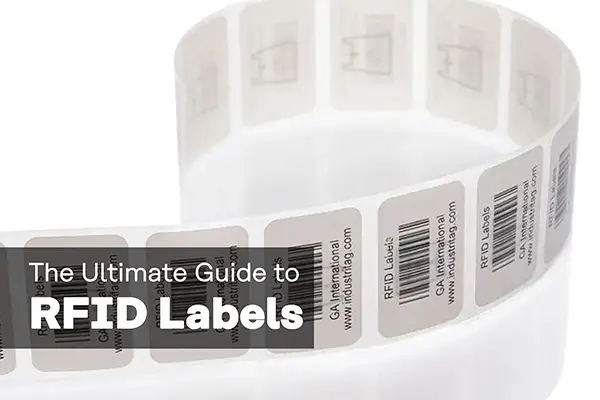In today’s fast-paced world, businesses are constantly seeking innovative solutions to streamline their operations and enhance efficiency. One such technology that has gained significant prominence is Radio Frequency Identification (RFID). RFID labels have revolutionized tracking and inventory management, providing businesses with real-time visibility and accurate data analysis. This article explores the applications, benefits, and challenges associated with RFID labels, shedding light on how this technology is shaping the future of various industries.
Understanding RFID Labels
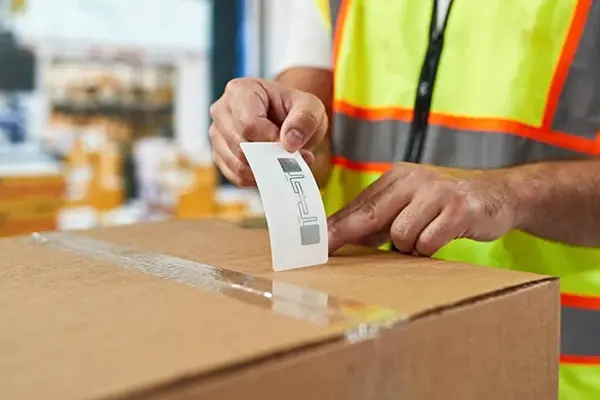
What are RFID Labels?
RFID labels are small adhesive tags that contain an integrated circuit and an antenna. These labels utilize radio frequency technology to transmit and receive data wirelessly. They are often affixed to objects, products, or assets for tracking and identification purposes.
How Do RFID Labels Work?
RFID labels operate through a three-part system: the RFID tag, RFID reader, and backend database or system. The tag consists of an integrated circuit and an antenna that emits radio waves. When the RFID label comes within the range of an RFID reader, the reader captures the radio wave signals and transmits them to the backend system, enabling the extraction of relevant information.
Working Components of RFID Labels
RFID labels comprise three main working components:
Tag: The tag contains the integrated circuit and antenna responsible for transmitting and receiving radio frequency signals.
Reader: The reader is the device that communicates with the tag and captures the transmitted signals.
Backend System: The backend system processes and stores the collected data, providing real-time insights and analysis.
Applications of RFID Labels
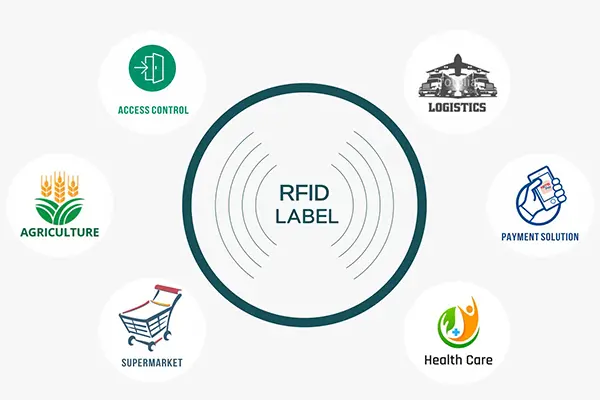
Supply Chain and Logistics
In the supply chain and logistics industry, RFID labels enable accurate tracking of products throughout the entire distribution process. These labels eliminate manual data entry errors, improve inventory visibility, and enhance overall operational efficiency. With RFID labels, businesses can automate inventory management, optimize order fulfillment, and minimize stockouts.
Read more details about how RFID labels can be used in logistics and supply chain.
Retail Industry
RFID labels have revolutionized inventory management in the retail sector. Retailers can now efficiently track and manage their merchandise from the distribution center to the store shelves. With real-time data on stock levels and locations, retailers can prevent stock discrepancies, reduce theft, and enhance the overall shopping experience for customers.
Read more details about How RFID Labels Revolutionize the Retail Industry.
Healthcare Sector
In the healthcare sector, RFID labels play a vital role in asset and inventory management. Hospitals can utilize RFID labels to track medical equipment, monitor medication inventory, and ensure the availability of critical supplies. This technology helps healthcare providers streamline processes, reduce costs, and improve patient safety.
Manufacturing and Warehousing
RFID labels offer significant advantages in manufacturing and warehousing environments. By tagging assets, raw materials, and finished products, businesses can monitor their location, status, and movement in real time. This enables efficient inventory management, reduces the risk of misplaced items, and improves overall productivity.
Benefits of RFID Labels
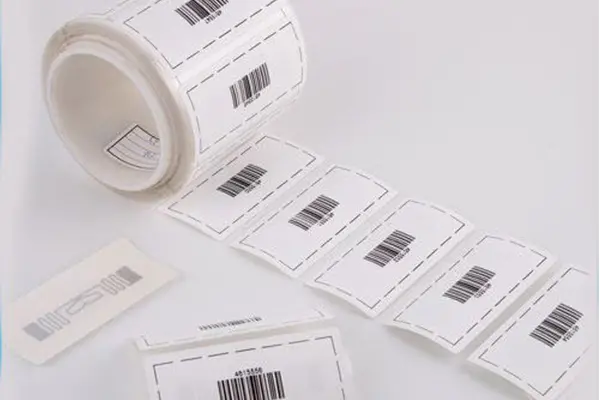
Enhanced Inventory Management
RFID labels provide businesses with accurate, real-time data on inventory levels, enabling proactive inventory control and reducing stockouts or overstocking. This improved inventory management enhances order fulfillment and customer satisfaction.
Improved Operational Efficiency
With RFID labels, businesses can automate various processes, eliminating the need for manual data entry and reducing human errors. This automation streamlines operations optimizes resource allocation, and increases overall efficiency.
Increased Visibility and Tracking Accuracy
RFID labels offer unparalleled visibility into the location and status of tagged items. They enable businesses to track assets, products, or inventory throughout the supply chain, ensuring accurate and timely deliveries. The high tracking accuracy minimizes loss, theft, and counterfeit concerns.
Reduced Labor Costs
By automating manual tasks, RFID labels reduce the need for extensive labor and manual data entry. This leads to cost savings, as businesses can allocate their workforce to more value-added activities, ultimately improving productivity.
Challenges and Limitations of RFID Labels
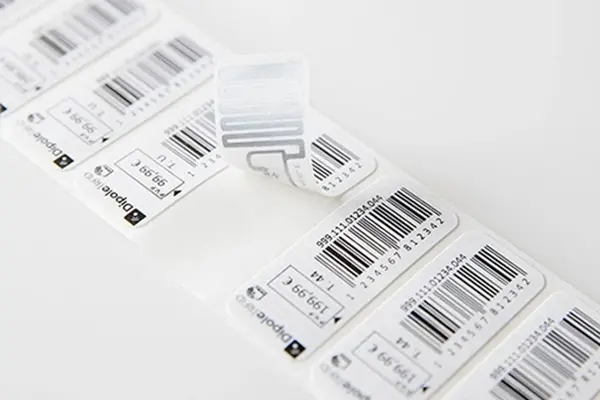
Cost Considerations
Implementing an RFID system can involve significant upfront costs, including the purchase of RFID tags, readers, and backend infrastructure. However, the long-term benefits and cost savings often outweigh the initial investment.
Integration Challenges
Integrating RFID technology with existing systems can be complex, especially in large-scale operations. Ensuring seamless integration with enterprise resource planning (ERP) or warehouse management systems requires careful planning and expertise.
Privacy and Security Concerns
As RFID labels transmit data wirelessly, there are concerns about data privacy and unauthorized access. Businesses must implement robust security measures to protect sensitive information and ensure compliance with data protection regulations.
Future Developments and Trends in RFID Label Technology
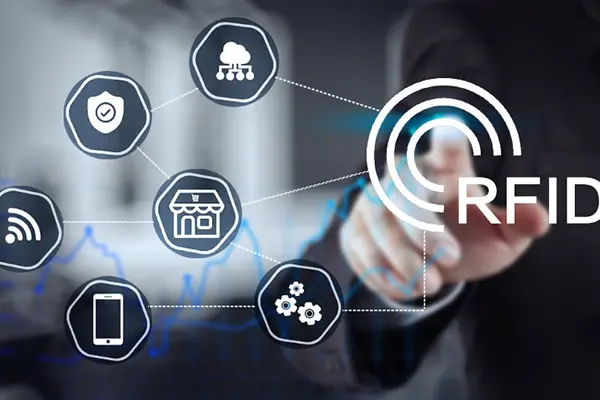
IoT Integration
RFID labels are expected to integrate with the Internet of Things (IoT), enabling seamless communication between physical objects and digital systems. This integration will enhance data collection, analytics, and decision-making capabilities, further improving operational efficiency.
Miniaturization and Cost Reduction
Advancements in RFID technology aim to miniaturize the tags and reduce their manufacturing costs. Smaller, cost-effective RFID labels will enable wider adoption across industries and applications.
Enhanced Data Analytics
Future RFID label systems will leverage advanced data analytics techniques, providing businesses with actionable insights and predictive analytics. This will enable proactive decision-making, process optimization, and improved overall performance.
Conclusion
RFID labels have emerged as a game-changing technology, revolutionizing tracking and inventory management across various industries. With their ability to provide real-time visibility, accurate tracking, and enhanced operational efficiency, RFID labels are reshaping the way businesses handle inventory, assets, and supply chain processes. While challenges exist, the future of RFID labels holds immense potential for further advancements and integration with emerging technologies.
Nexqo is a professional RFID & NFC solution provider established in 2010, we provide one-stop solutions including hardware and software needed for your application. Welcome to contact our sales experts to learn more about our RFID Labels.
FAQs
What is the lifespan of an RFID label?
The lifespan of an RFID label can vary depending on factors such as usage, environmental conditions, and quality.
Can RFID labels be reused?
In many cases, RFID labels can be reused. Some RFID labels are designed with detachable or rewritable features, allowing businesses to reprogram and reuse them for different applications. However, not all RFID labels are reusable, and it depends on the specific type and functionality of the label.
How accurate are RFID label readings?
RFID label readings are highly accurate, with a minimal margin of error. When deployed and configured correctly, RFID systems can achieve near-perfect accuracy in capturing and transmitting data. However, environmental factors and interference can affect performance, and it’s essential to optimize the system for the specific application.
Are RFID labels compatible with existing systems?
RFID labels can be compatible with existing systems, but integration may require additional software or hardware adaptations. It is crucial to assess the compatibility and consult with RFID technology providers to ensure seamless integration with existing infrastructure.
Can RFID labels withstand harsh environmental conditions?
RFID labels are available in different variations, including ruggedized options suitable for harsh environmental conditions. These labels are designed to withstand extremes in temperature, moisture, dust, and other challenging factors. It is essential to select RFID labels that meet the specific requirements of the intended environment.
